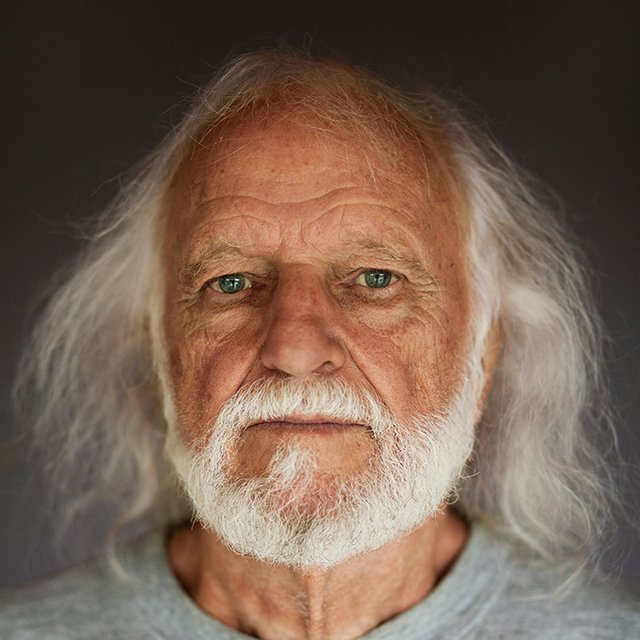See the Light of the Day (Se dagens lys)
- Svend Åge Madsen (1939 - )
Introduction to:
See the Light of the Day (Se dagens lys)
Published 1980, 180 pages
See the Light of Day was written as a radio novel. In accordance with the demands of the medium – the recital of an episode each day – it is a first person novel in the intimate form of a fictional diary. Transcending realism, it describes a ‘society of rotation’ in which each character awakens to a new world each morning, with a new partner, family and profession that has been exchanged during night.
This novel is both a continuation and a parody of the 20th century’s strong and much-read genre tradition of them futuristic dystopia (cf. Samjatin, Huxley, Boye, Orwell, and Bradbury). It plays with the standard plot of the dystopia by telling the story of two rebels, Elef and Maya, who fall in love and revolt against society. But it diverges from the dystopic tradition by presenting instead of an autocratic state or enslavement to machines a much less frightening future society – almost a new left utopia – with direct democracy, equality and maximal mobility but tight constrains on individual choice. Thereby it sharpens the philosophical question of ‘the ideal society’. The urge to oppose the norms of any given society seems inborn in Madsen’s men and women.
A kind of reverse Don Juan, Elef rebels in order to stay together with his Maya. They are granted a kind of asylum where they can pursue their life project, writing a novel about an imperfect, but colorful and dramatic past: Europe in the late 20th century, before ‘the great depression’ and the subsequent change to a society of rotation. The novel turns out to be identical with Madsen’s former masterpiece – Virtue and Vice in the Middle Time (1976, English translation 1992), which managed to be science fiction, a historical romance and a contemporary novel at one and the same time. It is a strong instance of the impressive interconnectedness of Madsen’s enormous work (which exceeds 50 novels, short story collections and dramas), a literary universe comparable to that of Balzac’s Human Comedy. The metafictional dimension in See the Light of Day is important for its critique of society. Moreover it contains an imaginative satire of actual tendencies that are in many respects even more important today. Since the 1970s, the divorce rate has risen in many parts of the world, often accompanied by ‘serial monogamy’ and frequent family reconfigurations. With ubiquitous security cameras, ever-present tablets and mobile phones we have further developed into a society of surveillance and constant distractions, impeding continuity and contemplation.
The novel’s composition implies a philosophical treatment of existential forms of time. So does the title imagery around sight and eyes, wakening up and (re)birth. In the repetitions with variations that open each chapter, a lyrical impulse has been successfully ‘novelized’. At once a simple story and a subtle philosophical parabel See the Light of Day has remained one of Svend Åge Madsen’s most popular novels.
Anker Gemzøe, Professor Emeritus, Aalborg University

AUTHOR:
Svend Åge Madsen (1939 - )
BOOK:
See the Light of the Day (Se dagens lys)
Gyldendal Publishing
Published 1980, 180 pages
TRANSLATED TO:
Icelandic, Norwegian, Latvian, Czech and German
FOREIGN RIGHTS:
Jenny Thor
Svend Åge Madsen
He studied mathematics at Århus University after taking grammar school leaving examination in 1958. First publication 1963 with the novel “Besøget”. Since then he has lived as an author.